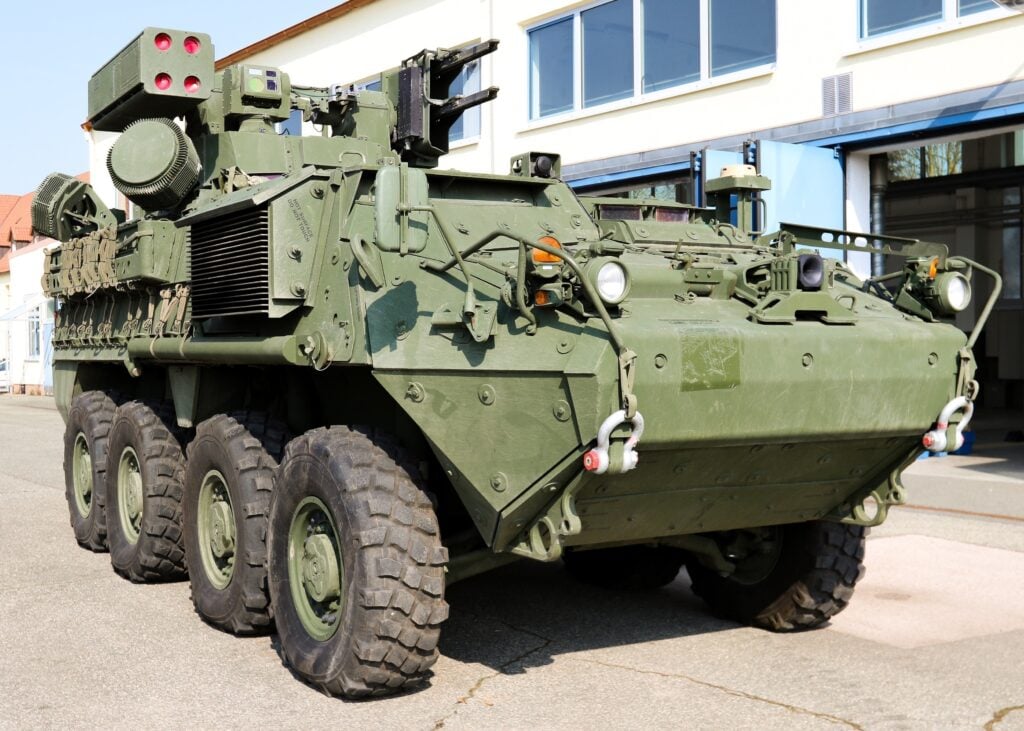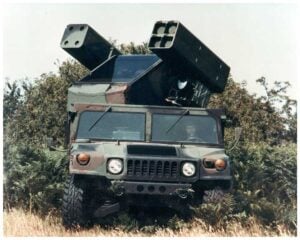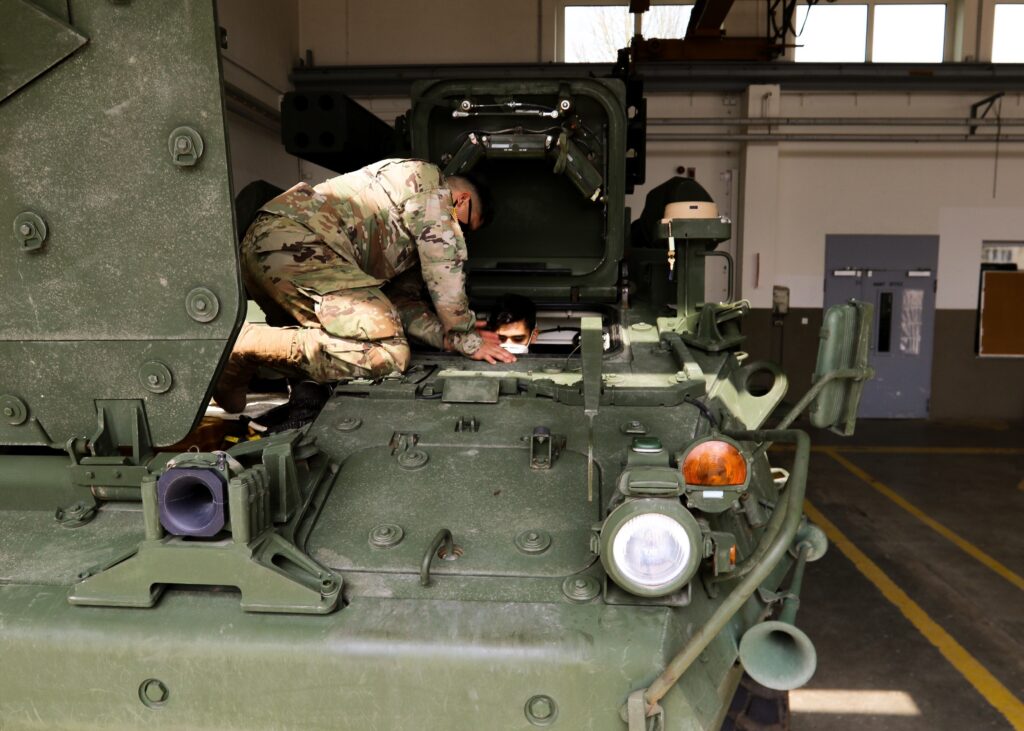
Maneuver Short-Range Air Defense (MSHORAD) Stryker in Germany.
WASHINGTON: Army frontline air defenses ended decades of neglect this week when it delivered the first four operational Stryker anti-aircraft vehicles to Germany. The Maneuver Short-Range Air Defense (MSHORAD) Strykers are armored 8×8 vehicles fitted with an autocannon and a missile launcher capable of firing Hellfires or Stingers. They will replace the less well-armed, less mobile, and more vulnerable Avengers, a 1980s-vintage variant of the 4×4 Humvee that can only fire Stingers.
“There’s really no comparison to anything I’ve operated in my career,” a battalion NCO, Sgt. Andrew Veres, said in an Army release. “Everything in these systems is an improvement – the survivability, mobility, dependability, off road ability.”
The Army had 26 battalions of Stingers at the program’s peak in 2004 but the demands of Afghanistan and Iraq, where the enemy had no airpower, drove steep cuts. The Army was down to just nine battalions – seven of them in the National Guard – and 400 total vehicles by 2017, the year when the Army decided to revive its frontline anti-aircraft force.

Avenger anti-aircraft missile vehicle.
After the Cold War, Army air defense focused on the SCUD threat and long-range missile defense programs like Patriot and THAAD. But after witnessing the deadly impact of Russian drones in the 2014 invasion of Ukraine, the Army realized it needed to urgently rebuild its Short-Range Air Defense (SHORAD) units, particularly in Europe.
First, the service redeployed Avengers to Germany – all had been withdrawn – and then, in fall 2017, held a “shoot-off” among potential replacement systems. In June 2018, it picked a Leonardo DRS-modified variant of the versatile 8×8 Stryker, a lightly armored wheeled vehicle that had proved its value in Iraq and could keep up with tanks over most terrain. (The heaviest armored unit permanently based in Europe is a Stryker regiment, although tank units deploy there regularly).
In a lightning turnaround by Pentagon procurement standards, the first four operational MSHORAD Strykers arrived at a combat unit in Germany less than three years later, this spring. That is the 5th Battalion of the 4th Air Defense Artillery Regiment.It was activated just three years ago. Given the increasing emphasis on China, there’s a good chance the next battalion of anti-aircraft Strykers will be deployed to the Pacific.
The Army plans to buy at least 144 MSHORAD Strykers – four battalions’ worth – for $1.2 billion by 2022.

Troops in Germany clamber over their new MSHORAD Stryker.
Navy jet trainer fleet operations remain paused after engine mishap
One week after the incident, a Navy spokesperson says the service is continuing to assess the fleet’s ability to safely resume flight.


























